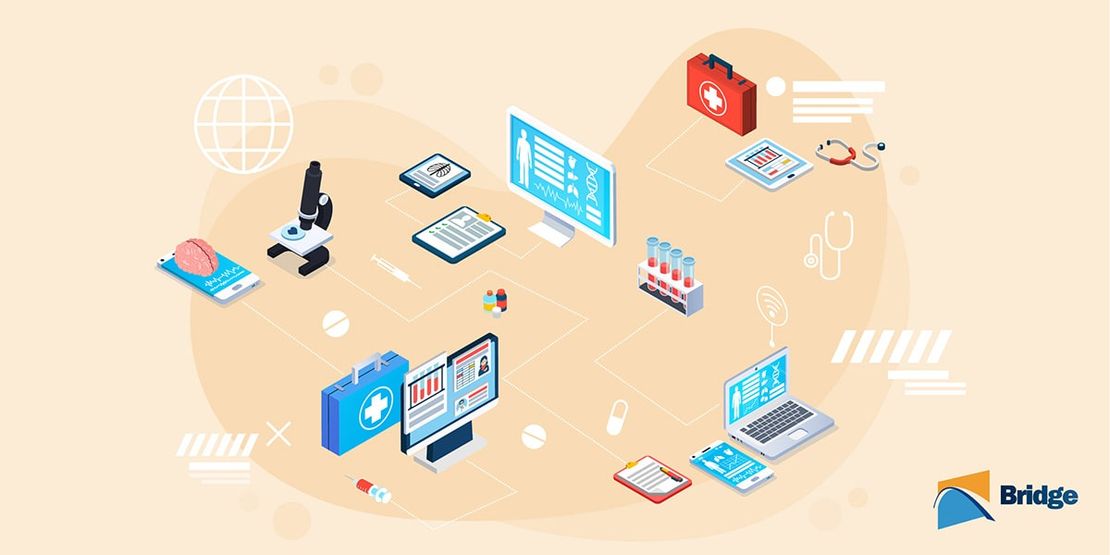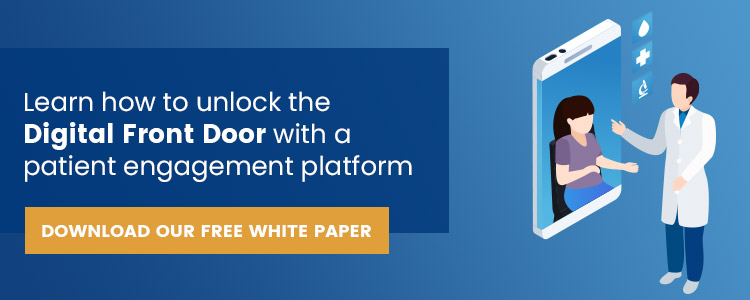Why Your Organization Needs a Healthcare API
- Josh Orueta
- July 30, 2021

Healthcare is currently undergoing a massive phase of digitalization as it strives to shape its structures for the modern world, while also giving patients better access to both their practices and their health data, as mandated by the 2016 Interoperability and Cures Act[¹]. In 2020, nearly 50% of healthcare providers discovered new digital solutions to increase patient engagement and improve efficiencies.
To succeed in a competitive environment and remain fully Cures Act compliant, digitalization should be an essential part of your strategy – but modernizing your organization’s existing systems can also come with major challenges.
Enter the API: a small acronym that could be the key to accelerating the modernization of your organization. With a healthcare API, you can unlock more of the benefits of digitalization by overcoming technical challenges, staying connected to patients, and streamlining internal processes.
What is a healthcare API?
The ‘API’ acronym stands for Application Programming Interface. An API can be seen as the messenger that enables different devices and pieces of software to interact with each other, making them a cornerstone of popular applications such as online booking systems or price comparison sites.
A healthcare API performs much the same function in a healthcare context, connecting different sources of information across different platforms, software applications and devices. For example, a healthcare API could be used to determine whether a patient has full healthcare coverage (by linking with the insurance provider’s API) or to develop reports based on an individual’s health data, which would be pulled from that patient’s Electronic Health Records (EHR).
How APIs aid health organizations
Healthcare APIs can help health organizations in countless ways, from streamlining workflows to aiding communication both inside and outside of the company.
They can aid healthcare organizations in collecting, storing and managing huge swaths of patient data[²] while remaining fully compliant with the latest regulatory frameworks, such as HIPAA and the Cures Act.
The Cures Act mandates that all relevant parties – from caregivers to patients – are given access to a patient’s health data, and that this data is properly protected from cyberthreats. However, in a 2020 survey, more than 70%[³] of hospitals described challenges exchanging data between software from various vendors. With an API, this type of data exchange becomes both seamless and secure, saving administrative staff and physicians vast amounts of time and improving transparency around patient health records.
In 2019, only four in 10[³] hospitals said they used provider portals, interface connections among EHR systems, and national networks to digitally query patients’ health information. If health organizations are to cope with growing patient populations and Cures Act compliance requirements, offering patients simplified access to their own data through a healthcare API is absolutely essential.
Additionally, this type of programming interface can form the basis of modern, patient-centered healthcare patient portal apps that can transform the way patients interact with their healthcare providers.
They can assist at almost every stage of the patient journey, whether it’s allowing the patient to search for available doctors’ appointments online, enabling the patient intake app, or ensuring that the relevant test results and check-ups are instantly stored in a patients’ EHR. This not only helps boost patient engagement by creating strong digital links between patients and their practice, but also ensures easy cooperation with third-party stakeholders such as insurance firms.
Why healthcare organizations need an API
A healthcare API allows health organizations to offer modern digital services and patient-facing apps. Several highly desirable tools for patients – such as medical appointment scheduling software, patient intake and bill pay – all rely on an API to communicate with databases and source systems.
With the vast majority of millennials and around half of Gen-Xers saying they prefer to book appointments online, adding this type of sought-after feature to your portal can therefore lead to increased patient satisfaction, acquisition and loyalty.
In addition, APIs are often essential for improving the performance of legacy source systems[⁴] and improving access to the data that’s held on these systems in a safe and compliant way. That makes it far simpler for organizations with legacy EHR software to comply with the Cures Act and allow patients simple, safe, real-time access to their health data.
As well as assisting with compliance and patient-facing services, a healthcare API can have far-reaching benefits for an organization’s operational efficiency. With real-time interfaces allowing up-to-date data to be pulled from a variety of sources and systems, an API can pave the way for innovation and continual improvement and enable advanced analytics on patient care and practice management.
Once again, the secret power of these “unsung heroes” is enabling the simple transfer of information between multiple devices and sources. This makes them an essential tool for streamlining workflows in your organization and facilitating cooperation between practice staff.
- Bonamici, S. (2016). H.R.34 – 114th Congress (2015-2016): 21st Century Cures Act. [online] www.congress.gov. Available at: https://www.congress.gov/bill/114th-congress/house-bill/34
- Siwicki, B. (2019). What you need to know about healthcare APIs and interoperability. [online] Healthcare IT News. Available at: https://www.healthcareitnews.com/news/what-you-need-know-about-healthcare-apis-and-interoperability
- Johnson, C. and Pylypchuk, Y. (2021). Use of Certified Health IT and Methods to Enable Interoperability by U.S. Non-Federal Acute Care Hospitals, 2019. [online] ONC Data Brief No.54. Available at: https://www.healthit.gov/sites/default/files/page/2021-02/Use-of-Certified-Health-IT-and-Methods-to-Enable-Interoperability-by-U.S.-Non-Federal-Acute-Care-Hospitals-2019.pdf
- Kamper, T. (2020). Are APIs good for Legacy System Integration? [online] SEEBURGER Blog. Available at: https://blog.seeburger.com/legacy-system-integration-with-apis/
